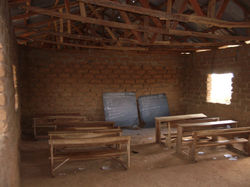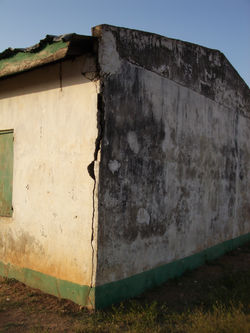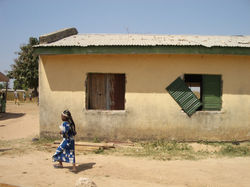Capacity for Universal Basic Education Project
In October 2005, I was asked to go to Nigeria to join a team of consultants who would be carrying out a study of school facilities being provided for basic education ie for primary and junior secondary education. The study was to take place under the auspices of the Capacity for Universal Basic Education (CUBE) Project that was being managed by the British Council and funded by DFID.
I was to be the leader of a team of ten local consultants who included an architect, quantity surveyors, evaluation and monitoring specialists, finance specialists, educational planners and a self-help and poverty alleviation specialist.
Our task was to carry out an evaluation of the practices affecting school construction and renovation and we were asked in particular to review the modalities that had an impact on school upgrading programmes with particular regard to the design and construction of facilities; planning and budgeting processes; financial disbursement processes; monitoring systems and self-help and poverty alleviation. We were also to determine what the school facilities requirements and shortages were and to provide guidance on the development of a national strategy for school facilities construction.
The study took place in November and December 2005 and the main conclusions of the study were as follows:
‘The study has shown that all school renovation and construction programmes whether carried out by the States, Federal agencies or Development Partners suffer to some extent from a number of serious deficiencies including: lack of educational planning criteria in selecting schools; lack of transparency in bidding processes; use of unqualified contractors; political interference; poor quality of designs and documentation and a lack of competent supervision and monitoring all of which have led to very poor standards of renovation and construction which together with the almost complete lack of maintenance is greatly reducing the useful lives of many facilities.
While it was noted that Federal agencies and the Development Partners have the means of making changes in their own programmes, the Federal government has very little power to change the way that the States implement their programmes and can only hope to do so by setting examples of good practice.
The study has shown that where communities have been involved in the construction of school facilities there is a greater sense of ownership of, and responsibility for those facilities than with contractor-implemented projects. It has also shown however that those communities are at present not receiving sufficient training, technical assistance or funding to enable them to construct good quality facilities.
The scale of the problem that has to be faced is enormous and it is very doubtful whether the projects presently planned or underway will meet the total estimated requirements for universal education by 2015. There needs to be concerted action over several fronts over a long period of time if the problem of providing adequate numbers of good quality, long lasting school facilities is to be solved and it must be realised that there can be no quick fix to this problem. The present poor management systems need to replaced and sustained efforts need to be made to use the forthcoming resources that will be made available from debt relief if Nigeria’s children are not to continue to be denied access to good quality school infrastructure.
Major programmes are required to renovate and construct large numbers of classrooms and it is unlikely that any one method of implementing such a programme will be able to meet the demand. It is suggested therefore that improved methods of implementing projects using contractors are adopted together with the increased use of community-based construction methods.
Experience in other countries has shown that it is possible to construct good quality facilities for schools using community-based construction methods and this approach could be used to good effect to renovate or construct large numbers of school facilities if it were properly funded and managed, if training of communities takes place before the programme starts and if adequate technical assistance, professional supervision and monitoring is provided.’
Bauchi, Kaduna, Lagos and Niger States were visited by the team during the course of the study and schools constructed by a number of agencies were visited in each of the States. The general standard of design and construction of all of the schools that were visited was generally very poor and there had obviously been a complete lack of maintenance of school facilities. Many of the schools visited were therefore in a very bad condition and some actually posed a danger to the pupils and teachers who had to use them. The photo gallery below shows some examples of both old and newly built schools.
The report also included proposals for improved designs for schools together with construction costs and recommendations for future school
uilding programmes and the full report can be accessed here.








































